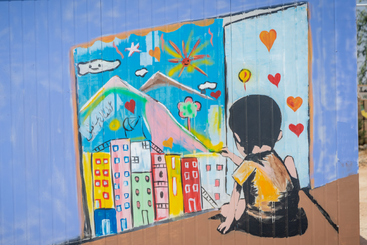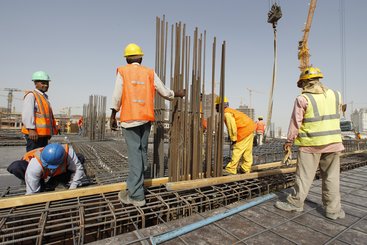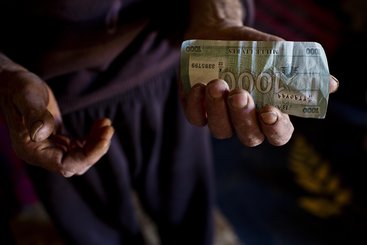Across the world, refugees and internally displaced people (IDPs) are systemically denied, or have limited access to, essential services like healthcare, welfare and education. As the number of global crises displacing people increases, it’s high time public services meet the needs and rights of all. On World Refugee Day, we share key recommendations to build truly inclusive public services.
In 2022, more than 100 million people were forcibly displaced due to persecution, conflict and other human rights violations; a figure that rises when factoring climate and disaster displacement. Most remain displaced in their own countries, while around 40% have sought protection in another country. Host contexts are typically in low- and middle-income countries – for over 75% of refugees are virtually all IDPs.
For many years, the main international response to large-scale displacement crises was to mount emergency humanitarian operations, with camps set up to house displaced families and assistance, schools and hospitals delivered by UN agencies and NGOs.
Such humanitarian programming, for the most part, operated separately to government public services. This approach does little to strengthen local services and government accountability for the social and economic inclusion of refugees and IDPs.
From crisis response to inclusion
There has been growing recognition of the need for humanitarian programmes to engage more effectively with state systems, particularly as the scale and duration of displacement crises increases over time.
This has included a number of high-profile commitments on the inclusion of displaced people in national systems. Yet many continue to lack the rights to essential public services. The right to social protection, especially social assistance, is often restricted and a recent study of 48 refugee-hosting countries found that 10% did not allow any access to public education systems.
Moreover, even where rights are granted, inclusion often fails to happen in practice, so how do we get there? Drawing on recent findings on inclusive social protection systems for displaced children and their families and linking social protection and humanitarian assistance, and emerging findings on integration in national education systems, here we highlight three sets of findings and recommendations for policy and action.
1. Rights alone only go so far – more work is needed to overcome barriers and exclusion
While public services are not always readily available even for the host population, refugees and internally displaced people often face heightened access barriers:
Displaced people often lack the necessary documents to access public services, either because they are not registered in relevant databases or because their paperwork has been lost, left behind or is not considered valid in the new location.
- To enable enrolment, documentation needs to be replaced and burdensome registration requirements reduced, as was seen in many Latin American countries to enable Venezuelan and Colombian registration in education and social protection systems.
Physical, digital, financial and information barriers hamper displaced people’s access to services.
- Steps are needed to overcome physical and digital exclusion, unfamiliarity with local languages or systems, and unaffordable costs. For example, the government of Colombia has developed digital and in-person support and partnered with organisations working directly with displaced people to promote IDPs and Venezuelans’ registration in social protection systems. Where displaced families have been able to access cash assistance, as in Türkiye and Lebanon, this has played a vital role in overcoming financial barriers to children’s education.
Tensions between the displaced population and the host government or community can also form a barrier.
- Displaced people may be hesitant to present themselves to government services, particularly if they were displaced in a conflict involving the state. Careful consideration is needed to determine where non-governmental provision will still be needed for main service delivery.
- Xenophobia and discrimination by staff or host community members can prevent or discourage people from using services – or worsen their experience when they do. But there are also many examples of efforts to create welcoming environments. Seemingly ‘small’ actions, like teachers greeting children in their home language, can help.
In areas hosting large displaced populations, services are often too stretched to accommodate additional users.
- New funds to expand services both for displaced and host populations can help extend access in practice – as in the case of nascent social safety nets in many sub-Saharan African countries benefiting from recent World Bank funds for Refugees and Host Communities.
2. Adjust the design of services to effectively serve displaced people, whose needs may differ from the host population
Simply providing access to existing services is typically insufficient to effectively serve displaced people through state systems.
Since displaced households have often suffered traumatic experiences, lost much of what they owned, and have limited access to well-paid jobs and community networks, they will typically need higher levels of assistance than standard social protection programmes, as well as complementary programming such as child protection and psychosocial support.
Careful consideration is also needed to meet the needs and concerns of those with marginalised and stigmatised identities. Such adjustments will be best identified in collaboration with displaced people themselves.
In schools, a critical factor is teachers’ preparedness to support learners who are not fluent in the language of instruction, who have missed out on education, or have not necessarily mastered the same skills and content as their host community counterparts.
Studies from Türkiye, Brazil and Guyana emphasise the importance of training teachers to create effective learning environments for refugees and teach the national language as a second language. While in high-income countries, some dedicated language and psychosocial support is often available, this is rarely the case in many low- or middle-income contexts
3. Concrete progress requires increased financial and political support
The system-level barriers discussed here are well-known. But as xenophobic discourse gains ground in much of the world, and forced dispersal policies jeopardise basic rights including children’s right to effective education – it is time to reiterate ways that national systems can support the wellbeing and social inclusion of displaced people – to the benefit of local populations and newcomers alike. This relies above all on two key enablers:
Increased financing
Expanding public services to displaced families requires sufficient and sustained financing. For schooling alone, the UNHCR and World Bank estimated in 2021 that between US$4.85 and US$5.11 billion was needed annually to support refugee inclusion in national education systems. However, the funding available often falls well short of what is needed. In the case of low and middle-income countries, increased international financing is sorely needed to fulfil existing international commitments to share the global responsibility for addressing displacement challenges.
Political will
Granting rights and then allocating resources to ensure those rights are implemented is above all a political question. Comparing displaced people’s rights to access education and social protection services, we see that rights to access education are more widespread. This may be because of greater empathy with children, and a sense that attending school helps social integration and reliance, though at local level similar resentment over access to schools are common in contexts that have absorbed large numbers of migrants and refugees. Meanwhile, refugees’ access to social protection may be viewed as ‘unfair’, especially in contexts where much of the population is struggling. Recent ODI research shows that xenophobia is not a ‘given’ – even when countries absorb substantial numbers of refugees and migrants in a short time period. Politicians can make a deliberate choice to avoid xenophobic discourse – as for example in Portugal.
Looking ahead
There is a vital need to strengthen public services to meet the needs of both displaced and local communities in many host contexts. Critically, efforts to enhance access for refugees and IDPs may bring broader benefits, strengthening the quality, effectiveness and coverage of national systems for host communities too.
But such gains will not be achieved without thoughtful integration with broader system-strengthening strategies - and greatly reinforced political, operational and financial commitments in the run-up to this year’s Global Refugee Forum and beyond.




